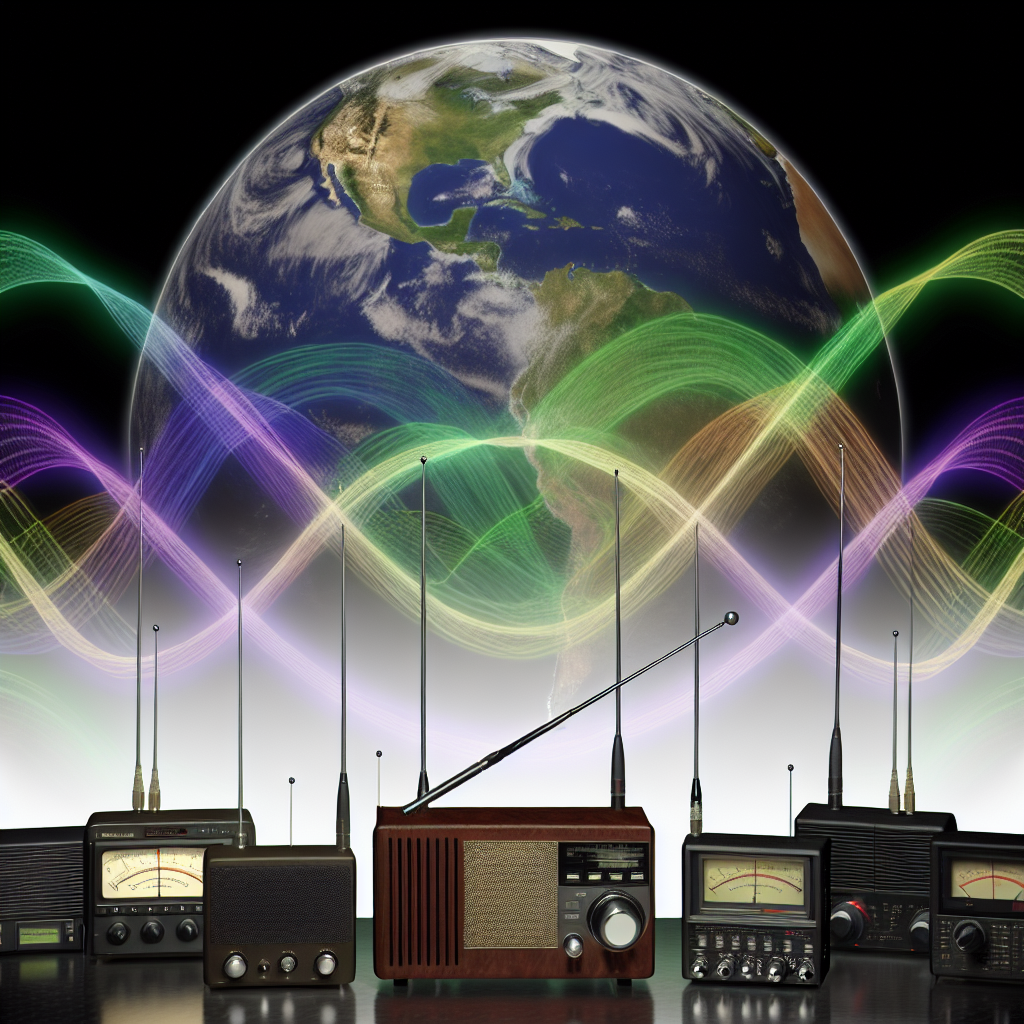Delve into the fascinating world of shortwave radio, a medium that has connected distant lands through the interplay of frequencies and atmospheric phenomena. Discover the roles of HF radios, AM broadcasts, and antenna tuning, unraveling a journey that embraces both vintage charm and modern innovation.
The Basics of Shortwave Radio
Shortwave radio operates within the 3 to 30 MHz frequency range, occupying a critical niche in the radio spectrum. These frequencies leverage skywave propagation, allowing signals to travel great distances by reflecting off the ionosphere. As signals bounce between the Earth and this layer of energized gas, listeners can access transmissions from far-off places, even when beyond the horizon. However, the effectiveness of these communications fluctuates based on solar activity. Variables like the sunspot cycle produce varying ionospheric conditions, directly impacting the clarity and reach of shortwave broadcasts, essential for amateur radio enthusiasts and emergency communications alike.
High Frequency Adventures
High Frequency (HF) radios operate within the 3 to 30 MHz range, allowing them to utilize skywave propagation for extensive communication. The effectiveness of these frequencies is significantly influenced by solar activity, specifically the sunspot cycle, which dictates the ionosphere’s behavior. During periods of heightened solar activity, ionization increases, enhancing signal reflection and improving communication over vast distances. Conversely, during solar minima, signals may falter, limiting long-range reception. This dynamic interplay means shortwave enthusiasts must remain vigilant, as conditions can change rapidly, impacting their ability to access international news broadcasts and engage in DXing adventures across the globe.
The Art of Radio Propagation
Radio waves travel through the atmosphere primarily via three methods: reflection, refraction, and absorption. As shortwave signals propagate, they can bounce off the ionosphere (a natural reflector), allowing communication over hundreds or even thousands of miles. This skywave propagation relies heavily on atmospheric conditions influenced by solar activity, which can enhance or inhibit signal strength.
Refraction occurs when signals bend around obstacles or layers of different atmospheric density, affecting how far and in what direction a signal travels. Absorption, on the other hand, can diminish signal strength due to moisture or atmospheric gases. Understanding these principles is vital for effectively navigating the world of shortwave radio and for achieving reliable global communication.
Antenna Tuning and Signal Reception
Antenna tuning is a critical aspect of shortwave radio that significantly enhances signal reception. A well-tuned antenna minimizes reflection of radio signals, which occurs when there is a mismatch in impedance between the antenna and the transceiver. Through techniques such as using an antenna tuner, operators can adjust the antenna’s characteristics, optimizing it for various frequencies within the amateur radio bands. This process enables clearer transmissions and better reception for international broadcasts and emergency communications, particularly in challenging conditions. The ability to efficiently capture weak signals broadens the horizons for hobbyists and DXers, encouraging a deeper exploration of the radio spectrum.
Modern Applications and the Shortwave Revival
The resurgence of shortwave radio in modern applications highlights its critical role in emergency communications and global broadcasting. As natural disasters intensify, shortwave radio remains an invaluable tool for rural communication and disaster preparedness. With portable models like the **Tecsun PL-880** and **Sony ICF-SW7600**, enthusiasts can enjoy both vintage charm and contemporary technology. These receivers excel in capturing international news broadcasts, fostering a global listening experience. Moreover, the hobby of DXing thrives as enthusiasts engage in worldwide signal chasing, reinforcing the relevance of shortwave as a medium for survival radio and a means to stay informed in unpredictable times.
Quick Recap
Shortwave radio continues to captivate enthusiasts with its blend of simplicity and complexity, offering a unique platform for global communication and exploration. As technology evolves, this medium provides both a nostalgic touchstone and a vital tool for many around the world.

Leave a Reply
You must be logged in to post a comment.